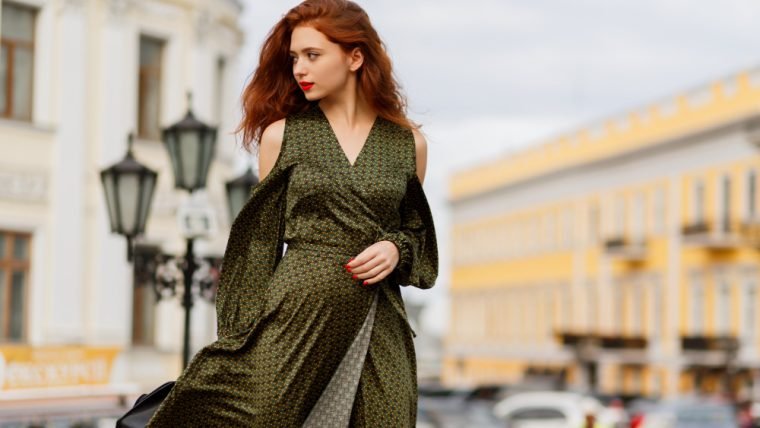Fashion is not just about clothing and trends; it is a form of art and self-expression. It allows individuals to showcase their personality, creativity, and identity through their clothing choices. Fashion has been an integral part of human culture for centuries, serving as a means of communication and a reflection of societal values. From the elaborate costumes of ancient civilizations to the avant-garde designs of modern fashion houses, the art of fashion has continuously evolved and shaped the way we perceive ourselves and the world around us.
Clothing as a Medium of Self-Expression
One of the most powerful aspects of fashion is its ability to serve as a medium of self-expression. Through their clothing choices, individuals can convey their personality, beliefs, and identity to the world. Whether it’s a punk rocker donning a leather jacket and ripped jeans or a business professional wearing a tailored suit, fashion allows us to visually communicate who we are and what we stand for.
Throughout history, fashion has been used as a form of self-expression in various cultures. For example, in ancient Egypt, clothing was not only a means of protection but also a symbol of social status and identity. The pharaohs wore elaborate garments adorned with precious jewels and intricate embroidery to showcase their power and wealth. Similarly, in feudal Japan, the kimono was not just a piece of clothing but a reflection of one’s social standing and personal taste.
The Power of Fashion in Creating Empowerment
Fashion has the power to empower individuals and communities by allowing them to express their unique identities and celebrate their cultural heritage. Traditional clothing plays a significant role in cultural celebrations and ceremonies, providing a sense of pride and belonging. For example, during festivals like Diwali in India or Chinese New Year, people dress in traditional attire to honor their cultural roots and create a sense of unity within their community.
Furthermore, fashion can be used as a tool for social change and empowerment. In recent years, there has been a rise in the use of fashion to challenge societal norms and promote inclusivity. Designers and brands are increasingly embracing diversity and creating clothing lines that cater to a wide range of body types, genders, and ethnicities. This shift in the fashion industry is empowering individuals who have traditionally been marginalized or underrepresented, allowing them to feel seen, heard, and valued.
The Role of Sustainable Fashion in Empowerment and Change
In recent years, there has been a growing awareness of the environmental and ethical issues associated with the fashion industry. Fast fashion, characterized by cheaply made clothing produced at a rapid pace, has led to significant environmental degradation and exploitation of workers in developing countries. However, sustainable fashion offers a solution to these problems by promoting ethical and environmentally-friendly practices.
Sustainable fashion empowers individuals and communities by providing them with the opportunity to make conscious choices that align with their values. By supporting brands that prioritize fair trade, use organic materials, and minimize waste, consumers can contribute to positive change in the industry. Additionally, sustainable fashion encourages creativity and innovation by challenging traditional production methods and promoting alternative materials and techniques.
Eco-Fashion: A Sustainable Approach to Clothing
Eco-fashion, also known as ethical fashion or green fashion, is a sustainable approach to clothing that aims to minimize the environmental impact of the fashion industry. It encompasses various practices such as using organic or recycled materials, reducing waste through recycling or upcycling, and promoting fair trade and ethical labor practices.
Many eco-fashion brands have emerged in recent years, making significant strides in creating a more sustainable fashion industry. For example, Patagonia is known for its commitment to environmental conservation and fair labor practices. The brand uses recycled materials in its products and donates a portion of its profits to environmental causes. Another example is Stella McCartney, who is renowned for her use of vegan materials and her advocacy for animal rights in the fashion industry.
Trending Fashion and Its Impact on Empowerment

Trending fashion, often driven by popular culture and social media, can have a significant impact on empowerment and self-expression. It provides individuals with the opportunity to participate in current trends and express their individuality within the context of popular culture. For example, the rise of streetwear has allowed people to embrace a more casual and comfortable style while still making a fashion statement.
Trending fashion can also be used as a platform for political and social activism. Many designers and brands have used their collections to raise awareness about important issues such as climate change, gender equality, and racial justice. By incorporating political statements or symbols into their designs, they are able to spark conversations and inspire change.
The Intersection of Fashion and Social Justice
Fashion has the power to intersect with social justice issues and create meaningful change. It can be used as a tool to raise awareness, challenge stereotypes, and promote inclusivity. For example, the Black Lives Matter movement has sparked a wave of activism within the fashion industry, leading to increased representation of Black designers, models, and creatives.
Fashion shows and campaigns have also been used to challenge beauty standards and promote body positivity. Brands like Aerie have embraced diverse models of all shapes, sizes, and abilities, sending a powerful message that beauty comes in many forms. By showcasing a range of body types on the runway or in advertising campaigns, fashion can help break down societal norms and empower individuals to embrace their unique beauty.
Fashion as a Tool for Cultural Preservation and Change
Fashion plays a crucial role in preserving and celebrating cultural traditions. Traditional clothing serves as a visual representation of cultural heritage, allowing individuals to connect with their roots and pass down traditions from one generation to another. For example, the kimono in Japan is not just a piece of clothing but a symbol of Japanese culture and craftsmanship.
Fashion can also be used to challenge cultural norms and expectations. Designers and brands are increasingly incorporating elements of different cultures into their collections, creating a fusion of traditional and contemporary styles. This cross-cultural exchange not only promotes diversity and inclusivity but also challenges stereotypes and encourages dialogue between different communities.
The Evolution of Fashion and Its Influence on Society
Fashion is constantly evolving, reflecting the changing values, attitudes, and aspirations of society. Throughout history, fashion has played a significant role in shaping societal norms and expectations. For example, in the 1920s, the flapper style challenged traditional gender roles by embracing shorter hemlines, looser silhouettes, and a more liberated attitude towards sexuality.
Fashion has also influenced societal perceptions of beauty. In the past, certain body types or features were considered more desirable than others, leading to unrealistic beauty standards. However, in recent years, there has been a shift towards embracing diversity and promoting body positivity. Fashion has played a crucial role in this movement by featuring models of all shapes, sizes, and abilities on the runway and in advertising campaigns.
The Future of Fashion and Its Role in Empowerment and Change
Fashion is not just about clothing; it is a powerful form of self-expression, empowerment, and social change. As we move forward, it is essential for the fashion industry to embrace sustainability, inclusivity, and ethical practices. By promoting sustainable fashion, supporting diverse voices, and challenging societal norms, we can create a future where fashion is not only beautiful but also empowering for individuals and communities around the world.




